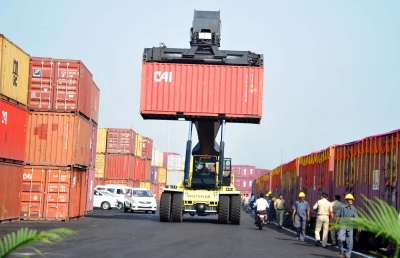Despite 'Make in India' push, India still a laggard: Survey
By IANS | Published: January 31, 2020 04:07 PM2020-01-31T16:07:30+5:302020-01-31T16:35:18+5:30
Despite 'Make in India and 'Digital India initiatives, India is still nowhere to be seen when it comes to becoming a major hub for producing final assembly of range of products called Network Products (NP), the Economic Survey 2019-20 said on Friday.

Despite 'Make in India' push, India still a laggard: Survey
Stressing on to make India an assembly centre for telecom handsets, the survey advised the government to adopt the Chinese formula to produce more components for consumer electronics locally and become a world power.
Large countries like Japan and China, which have survived in the market for longer periods of time, took off with an expansion of assembled-end products (AEP) while parts and components (P&C) followed suit.
"The most recent entrants, Thailand and Vietnam, have taken off with an expansion of AEP exports while P&C is following suit. For India, P&C has recorded some growth in recent years while AEP, with exceptions such as passenger cars and telecom handsets, has declined," the survey mentioned.
Despite being a "laggard", India has huge potential to emerge as a major hub for final assembly for Network Products (NP), said the survey.
The global value chains (GVCs) for consumer electronics are controlled by leading brands such as Apple, Samsung, Sony etc. within "producer driven" networks.
In general, these products are not produced from start to finish within a given country; instead, countries specialize in particular tasks or stages of the good's production sequence.
Labour-abundant countries, like China, specialize in low skilled labour-intensive stages of production such as assembly while the richer countries specialize in capital and skill-intensive stages such as R&D.
"Among the late entrants, China seems to have reached the inflection point of "inverted V" while Thailand and Vietnam are on the rising part of the curve. The take-off process in NP exports may be beginning in India," the survey noted.
In 2018, India toppled Vietnam to become the second largest manufacturer of mobile phones globally following China with a world share of 11 per cent.
"India could manufacture around 1.25 billion handsets across various segments by 2025, firing up an industry worth around $230 billion," suggested the survey.
Currently, nearly 12 per cent semi-knocked down (SKD) components are being sourced locally while rest of the 88 per cent come from China, Taiwan, Vietnam and Japan - with China being the biggest supplier.
"Between 2013 and 2017, while India's import of telecom handsets declined from $4.47 billion to $3.31 billion that of telecom parts increased steadily from $1.34 billion to $9.41 billion," the survey noted.
"At the same time exports of telecom handset increased significantly during the last three years. This pattern is consistent with the emergence of India as an assembly centre for telecom handsets," it added.
India had to import $13 billion worth of components in 2018, according to Counterpoint Research.
Not many high-value components are being sourced from India. As a result, local value addition in India was at 17 per cent during 2018.
"This helped the country save $2.5 billion in forex but increased assembly operations in India which led to imports of mobile phone components going up to $13 billion," said Tarun Pathak, Associate Director, Counterpoint Research.
( With inputs from IANS )
Open in app